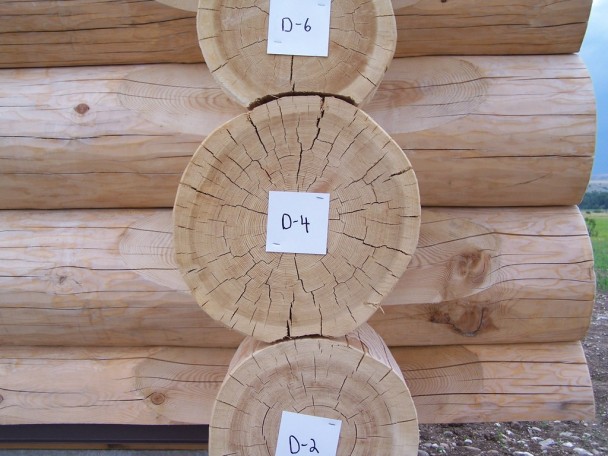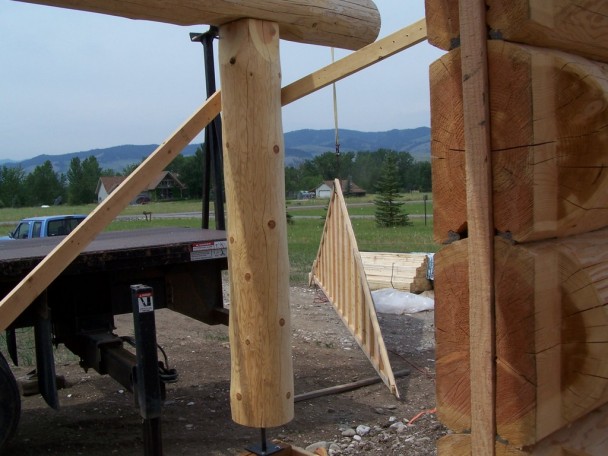Contrasting Handcrafted Log Homes Part 1
Sue | May 28th, 2012 - 6:01 amIn the world of handcrafted log homes almost all companies use impressive wide diameter logs. But the main difference is found in the crafting of the logs themselves. Let’s look at the contrast between the simplest log home shell and one that is entirely prepared before it ever arrives on the job site, as are ours.
The simplest form of a handcrafted log home is where the logs are only fit together at the corners. Wide gaps are left between the round logs. A log shell such as this will require extensive chainsaw work and chinking on the job site. There is no pre-cutting of door openings, window openings, etc.
Notice how you can see the space between the logs and look straight through the log shell. This style is also called Open Scribe.
In contrast, our handcrafted log homes are totally prepared ahead of time. There is very little chainsaw work on the site. It is virtually all done before the logs arrive.
1. Hand Peeling– Almost all handcrafted log homes today are peeled with a draw knife. A few companies still leave the bar in place but that is not a good practice. Logs should be peeled before any crafting begins.
2. Saddle Notching of Logs– First the first row of logs is laid out in the yard. To make the logs lay flat some will be cut in half. Then the corners begin to be notched and tight scribed together.
3. Scandinavian Full Scribing– Once the first row is begun the then next log (row or round number 2) is full scribed. To make this possible the log is rolled over and notched and chiseled out on the underside. The top is left round.
4. Full Scribe- The full scribing is similar to the Swedish Cope method. The full scribe channel on the under side of the log is cut with a V-groove shape. Then the edges of the scribe channel are lined with insulating gasket. This provides an overlap of log to log over a curved surface. This is the vital part that makes a full scribed log home not require chinking. If you look at the underside of this log in the air, you can see the black gasket running along the sides of the channel.
5. Door and Window Openings Pre-Cut- Door and window openings must be cut out either in the log yard before delivery or on the job site. The open scribe shell above will be sold as is, with no opening precut.
We choose to have the door and window openings pre-cut in the log yard. Within a window opening half of the log may need to be cut away to make room for the rough window opening. This requires skill and is best to do before delivery.
6. Keying of Door and Window Openings- A key-way is a vertical channel cut into the jamb opening of a door or window. Then a 2×4 is cut to length and inserted in the key-way slot. Key-ways are a vital part of preventing the natural shrinkage and compression of the logs from damaging, crushing, or breaking a door or window. As the logs descend they rest on the 2×4 spleen instead of causing binding at the opening.
Please visit the next post to view points 7-13 in Part II of “Contrasting Handcrafted Log Homes”








